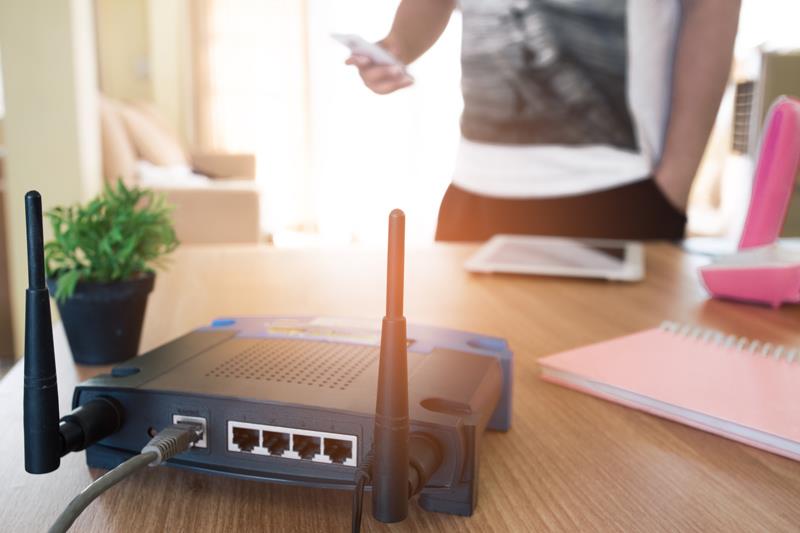
When was the last time you actually used a connected device in your home? Phones and tablets have overwhelmingly become the preferred connection devices for personal internet use. This has made WiFi an essential part of our connected lives, but how many of us really understand it? What is WiFi how does it work? Here is a quick synopsis of WiFi, how it works and how different WiFi technologies can affect the speed you receive.
Surfing the Radio Waves
WiFi uses radio waves to send and receive information, much like a two-way radio. Radio waves do not travel through the air as fast as a signal is able to transfer over an Ethernet cable. These radio waves are also affected by many forms of interference, so WiFi is always going to be slower than a wired connection. However, with the newest WiFi technology, WiFi performance has improved greatly.
Every wireless device (such as a smart phone) has an antenna that transmits the radio signal to the antenna in the router. The router receives the signal, decodes it, and then sends the info to the internet. The process also works in reverse.
The data rate between the antennas is limited based on the type of WiFi technology used in both the router and in the wireless device. The two most common WiFi technologies available today are 802.11n and 802.11ac. The maximum speed that any device will be able to send and receive data will be determined by the components in the router and the components in the device. Older routers and devices use the 802.11n components and newer routers and devices use 802.11ac components.
Antennas Make All the Difference
Additionally, the number of antennas in both the router and the device will determine the maximum speed. The number of antennas determines the number of streams available. These multiple streams transmit data simultaneously over different paths that are then combined at the receiving WiFi device to increase the receiver signal’s speed capabilities.
Both 802.11n and 802.11ac support multiple streams; however, an 802.11n stream has a maximum capability of 150 Mbps versus 433 Mbps for an 802.11ac stream. The newer technology is nearly 3 times faster per stream!
When trying to determine the number of streams that your router or device is capable of, you would look for 1x1 (one antenna supporting one data stream), 2x2 (two antennas supporting two data streams), etc. in the specifications from the device manufacturer. If the device manufacturer does not make a specification, it typically means the device is 1x1.
Here are the maximum speed capabilities by technology type and number of streams:
| Configuration | Max Speed for 802.11n | Max Speed for 802.11ac |
|---|---|---|
| 1x1 | 150 Mbps | 433 Mbps |
| 2x2 | 300 Mbps | 866 Mbps |
| 3x3 | 450 Mbps | 1300 Mbps |
| 4x4 | 600 Mbps | 1733 Mbps |
It is important to note that these speeds are almost never achieved in the real world. Real world speeds are affected by network overhead, physical obstacles (such as walls and other barriers), distance from the router, interference from other devices (such as microwaves), the number of devices using the WiFi network and more.
Here are some realistic expectations for maximum speeds for common Apple devices you may have in your home. To achieve these speeds, the internet plan you are subscribed to should be high enough to support these speeds. You can see that computers have better capabilities than tablets and phones and newer devices are faster than older devices. This holds true for Windows based devices, Android devices, and Google Chrome devices as well.
| Device | Year Released | 802.11 version | Max Speed Expected* |
|---|---|---|---|
| MacBook Pro | 2016 | 802.11ac | 750-900 Mbps |
| iPhone 7 / 7 Plus | 2016 | 802.11ac | 550–825 Mbps |
| iPad Pro | 2016 | 802.11ac | 275-400 Mbps |
| MacBook Air | 2015 | 802.11ac | 450-585 Mbps |
| iPhone 6s / 6s Plus | 2015 | 802.11ac | 275-400 Mbps |
| Apple MacBook Pro | 2014 | 802.11ac | 550-825 Mbps |
| iPhone 6 / 6 Plus | 2014 | 802.11ac | 275-400 Mbps |
| Apple MacBook Air 2013 | 2013 | 802.11ac | 150-195 Mbps |
| iPhone 5 / 5s / 5c | 2013 | 802.11n | 50-90 Mbps |
| iPhone 4 and earlier | 2010 | 802.11n | 25-35 Mbps |
* In order to achieve maximum speed, the device must be in close range and have line of sight to the router. Devices that are noted as 802.11ac must be paired with an 802.11ac router.
If you have an older router with 802.11n technology, but you have newer devices that have 802.11ac technology, you are not getting the performance that your devices are capable of. If this is the case, it is probably a good time to consider getting a new router or subscribing to Home Telecom’s MyWiFi. Conversely, if you have a new router with 802.11ac technology, but are using older devices, your speed will be slowed down due to the limited capabilities of the device.
